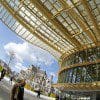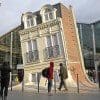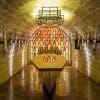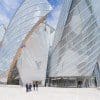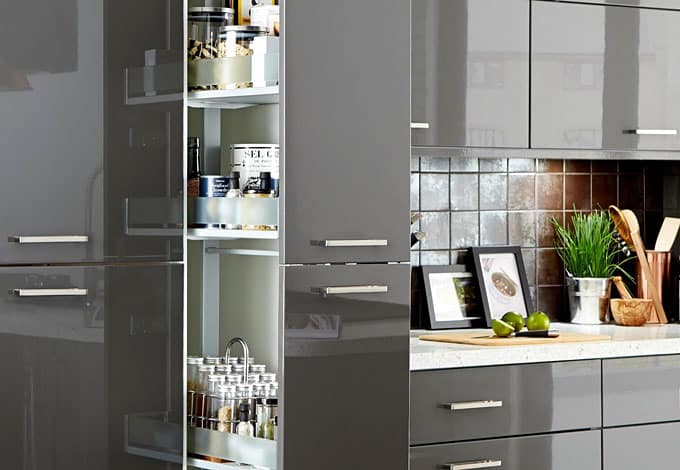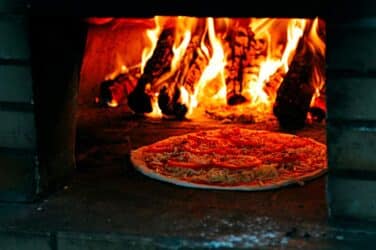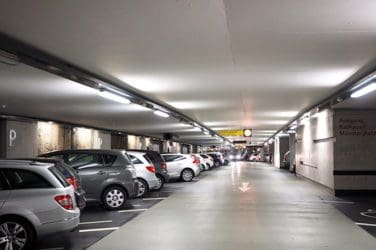The “Gare du Nord is such a dump compared to St Pancras” insult has stung Parisians ever since the Queen opened London’s magnificent Victorian Gothic Eurostar terminal in 2007.
Not to be upstaged by its cross-channel rival, in 2014 the SNCF launched “Plan Botox”, a four-year renovation project to restore Europe’s busiest station to its former glory.
For visitors who haven’t travelled to Paris in a while the transformation is startling. The renovations are now half complete and the Gare du Nord’s façade has changed from a pigeon dropping-encrusted disgrace to the honey coloured limestone palace of soaring arches and Ionic pilasters that was always intended as a worthy gateway to the City of Light. The gleaming station facade now seems at odds with the row of slightly seedy brasseries that line the street opposite, but it’s not the station’s monumental statues representing European cities that catch the eye.
As I sit enjoying a café crème before my Eurostar departure my gaze is drawn to a strange sculpture of a French townhouse that tilts over at a zany angle. The sculpture is Maison Fond (Melting House) by the Argentinian conceptual artist Leandro Erlich and represents civilization’s vulnerability in the face of climate change. Judging by people’s reactions it could also be an unintended metaphor for the vulnerability Parisian’s feel for anything new in their city. Quirky, eye catching and surreal, the sculpture stops passers-by in their tracks and for a good 20 minutes I watch a procession of finger pointing, head shaking and animated discussions in the street.
This kind of reaction is nothing new in Paris. When the Eiffel Tower opened in 1889 it was greeted by howls of protest. A petition drawn up by famous artists and writers including Emile Zola and Alexander Dumas decried it as useless and monstrous, an affront to French taste that endangered French art and history. In the heart of Paris another monumental development is nearing completion at Les Halles, the ancient market district of the 1st arrondisement which in its 19th Century heyday was known as the Belly of Paris. When the dilapidated market sheds were torn down in the 1970s a much-derided shopping centre was built that resembled a series of agricultural polytunnels. The latest reincarnation has come full circle and in homage to its market hall past, a giant undulating golden canopy covered in photovoltaic panels floats above a mixed retail and office development. The canopy looks out onto the new Jardins Nelson Mandela, a contemporary parkland which when fully completed will contain meadows, a music garden, discovery play areas for kids, giant chessboards and of course petanque courts.
I sit down on a bench on a sweltering spring afternoon and look up at the golden canopy as it shimmers in the hazy sunshine. The gently curving roof harmoniously weaves together the surrounding buildings, a hotch potch of clashing architectural styles that range from the late Gothic Eglise Saint-Eustache to the neo classical Bourse de Commerce. By anybody’s standards the gardens will be a valuable asset to an area of Paris which is notoriously devoid of parks, but looking around at the locals who have come to examine the project’s progress I notice the familiar doubtful expressions and shaking of heads.
When it comes to food and drink Parisian’s are on safer ground with the new wave of relaxed, contemporary restaurants that are democratizing fine dining in Paris. In a prime location overlooking the Jardins Nelson Mandela, world renowned 3 star Michelin chef Alain Ducasse has just opened Champeaux, a bright and cheerful brasserie that exudes an upbeat vibe. On the inside wall, a delightful 1970s-style airport departure board flicks up the different menus while charming multilingual waiters glide around rows of comfortable leather banquettes. Updated French classics are the order of the day and whether you want a quick croque monsieur or a lingering cordon bleu meal, everybody is welcome.
I order a pavé of meagre encrusted with toasted quinoa and served with a lemon and olive condiment. The contrasting flavours of sweet fish, earthy grain and tangy citrus are exquisite. For a main course, it’s light as a feather and gives me the perfect excuse to order a pistachio and salted butter caramel soufflé for dessert. I break into the golden crust and a whooshing aroma of pure pleasure seems to emanate from the centre. It’s one of those desserts that force you to slow down and savour every spoonful. Whether you love or loathe the golden canopy, Champeaux is destined to become one of its star attractions.
The following morning I head over to the Bois de Boulogne where Paris’ most eye catching contemporary art gallery, Frank Gehry’s Fondation Louis Vuitton lies half hidden behind a canopy of trees. Following years of NIMBY protests and court injunctions, the gallery finally opened its doors in October 2014, but considering it was built on the site of a bowling alley that resembled a 1970s car park one wonders what all the fuss was about. Variously described as an iceberg and a billowing sailing ship, it’s a building that in truth defies description and is more like a adult climbing frame designed for Grand Designs fans. On the roof a series of panoramic terraces lie underneath glass sails, and looking upwards my head reels with vertigo at the extraordinary latticework of wooden and steel struts that supports 3,600 individually crafted glass panels. Inside, the vast white gallery spaces are flooded with natural light and host an exhibition by contemporary Chinese artists exploring themes of turbulence and transformation in the modern world, a fitting theme for such a dazzling, thought provoking but ultimately controversial building.
From a dystopian vision of 21st Century culture, I head back 300 years to the 18th Century Caves du Louvre once home to the wine cellars of Louis XV and now transformed into a high tech multi-sensory exploration of France’s wine culture. Guided by an app, visitors are taken on a journey through the complex world of terroirs and grape varieties using touch, smell and taste games to hone their understanding of wine. During my visit I get to touch different soils ranging from rocky Chateauneuf du Pape to sandy Camargues. An interactive game of matching scented wood blocks to different fruits and spices teaches me about the common aromas found in wine, while pipettes filled with salty, sweet and woody flavoured water allow my tongue to explore the underlying taste structures. Expertly designed and great fun to navigate, in less than an hour I learn more about French wine than in several years of visiting French vineyards. Shortly afterwards, my new found wine appreciation skills come into good use at the beautifully renovated Les Fables de la Fontaine restaurant. As an aperitif I try a Saint Bris white burgundy, unique amongst the burgundies in using sauvignon blanc grape varieties. I take a sip and my tongue flits around analysing the citrusy floral notes and lingering yeasty finish. My verdict: like fine champagne stripped of its bubbles.
After lunch, I embark upon a classic Parisian flânerie, a delightful word meaning to stroll around and dawdle aimlessly. It’s what Parisians do a lot of, always keeping a beady eye on the latest changes to their city. On Avenue Kerber near the Arc de Triomphe I frown at an ungainly steel and glass canopy built above a terrace in front of the palatial Peninsula Hotel. It looks as if a colony of giant bats has crash landed onto the elegant façade. Later on at the beautiful neo-classical Madeleine church I encounter strange silvery humanoid sculptures that resemble monsters from an early Doctor Who series. In just two days I’ve become a true Parisian cynic. Whereas many cities have been wrecked by insensitive modern developments, it is the constant critical gaze of Parisians that has helped preserve the beauty of their city, and woe betide anyone who dares put up a modern day Eiffel Tower!
Words: Neil Geraghty
Eurostar operates up to 21 daily services from London St Pancras International to Paris Gare du Nord with one-way standard fares starting from £29 .com or 0344and standard premier from £97.50. The fastest London-Paris journey time is 2hr 15 minutes
Tickets are available from eurostar.com or 03448 224 777
Rooms at the Renaissance Paris Republique Hotel start at €300 for a standard double room. www.marriott.fr
For more information on Paris www.parisinfo.com http://www.parisweloveyou.fr/
For more information on France www.france.fr


